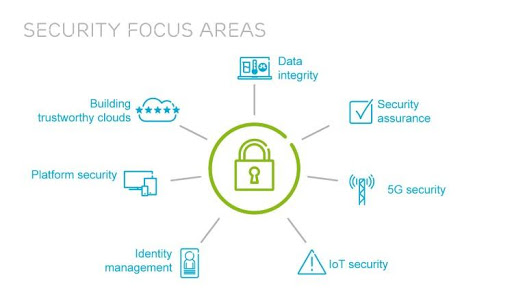5 Big Data and Cloud Security concerns to watch out for in 2019
As we are growing with technology, security would undoubtedly strike our path. Taking a look at the points of interest clouds give, organizations are...


5G or Fifth-generation wireless is the most modern technology of the cellular world, skillfully modified to increase the speed and receptiveness of wireless networks. Data transmitted with the help of this technology over wireless broadband connections have the ability to travel at paces as high as 20 Gbps which is estimated to not only exceed the speed of wire-line network but also reduce the latency of network by 1 millisecond or lower for uses that entail real-time feedback. Due to an abundance of bandwidth and a highly developed antenna technology, 5G will be able to handle an increased volume of data transmission over wireless systems.
Apart from advancements in latency, capacity, and speed, 5G provides network management features like Network slicing. This allows mobile operators to form several virtual networks within a single actual 5G network. This facility will enable wireless network connections to sustain particular uses or business cases and could be sold on an as-a-service basis. The internet of things (IoT), for example, could use secure, data-only connections.
The upcoming 5G network technology guarantees to blow up vertical industries, facilitating the formation of a wide range of new services—all of which will require fresh, varying levels of security. Let us see the following examples:
Because of open, flexible, programmable nature of new virtualization/cloud technologies such as software-defined networking (SDN) and network functions virtualization (NFV), they too are prone to insecure technologies in isolation and to mitigate their security concerns in their stride towards 5G networks, it is essential that they remain at the core of robust 5G networks.
Also, unauthorized Radio Access Network (RAN) with 5G devices might come up with a bigger threat of Distributed Denial of Service (DDoS).
Organizations making use of the 5G operator’s network will need to trust that their sensitive applications and data are well protected. Similarly, the network operator needs the confidence to trust that the rest of the resources of its network and its commitments to other customers are fully protected against wrong use by any single enterprise user. So, to prevent wide-scale service disruption to corporate connectivity, malicious use of IoT devices and millions or likely billions of dollars in losses, it becomes inevitable to tackle the 5G security issue.
Let us get a better idea about the 5G security issues on the primary stage. The primary 5G security protections that need to be focused on are:
The 5G technology will put forward soaring benefits, such as superior performance and speed, lower latency, and enhanced efficiency. But it will also entail risks with it. With a cosmic number of devices and imminent use of virtualization and the cloud, the 5G standard will give rise to more 5G security threats and a larger, multifaceted attack surface. To comprehend a healthy and strong communications future, the industry needs to preserve a laser focus on 5G security.
From a modernization viewpoint, 5G is a flare of light, but from a cybersecurity viewpoint, 5G is a breeding ground for a new period of exaggerated cyberwar. Cybersecurity researchers will be greatly concerned over attacks on Denial-of-service or DDoS. Devices like light bulbs, thermometers, and even refrigerators will be able to come online because of 5G. Users will be able to check on these appliances remotely by accessing a simple app, but these devices can also be seized by malicious characters. Big name sites may be down for days due to this increased power and connectivity, city utility capabilities even may get affected. Government agencies and private entities are also susceptible to this threat and hence have plans in place in the event a DDoS attack occurs.
While end users can only wait and see what exactly happened with the rollout, industries across the board will wish for harnessing the benefits of 5G. However, organizations and consumers in a similar way need to be alert in terms of how 5G could be used to facilitate, or hinder, us in the future. Rest it is guaranteed that even if a malicious player makes use of this technology, the security approach will continue to maintain pace with the ever-changing threat scenario.

As we are growing with technology, security would undoubtedly strike our path. Taking a look at the points of interest clouds give, organizations are...

Individuals are buckling down each day to change the manner in which society survives innovation, and one of the most recent boondocks in the field...